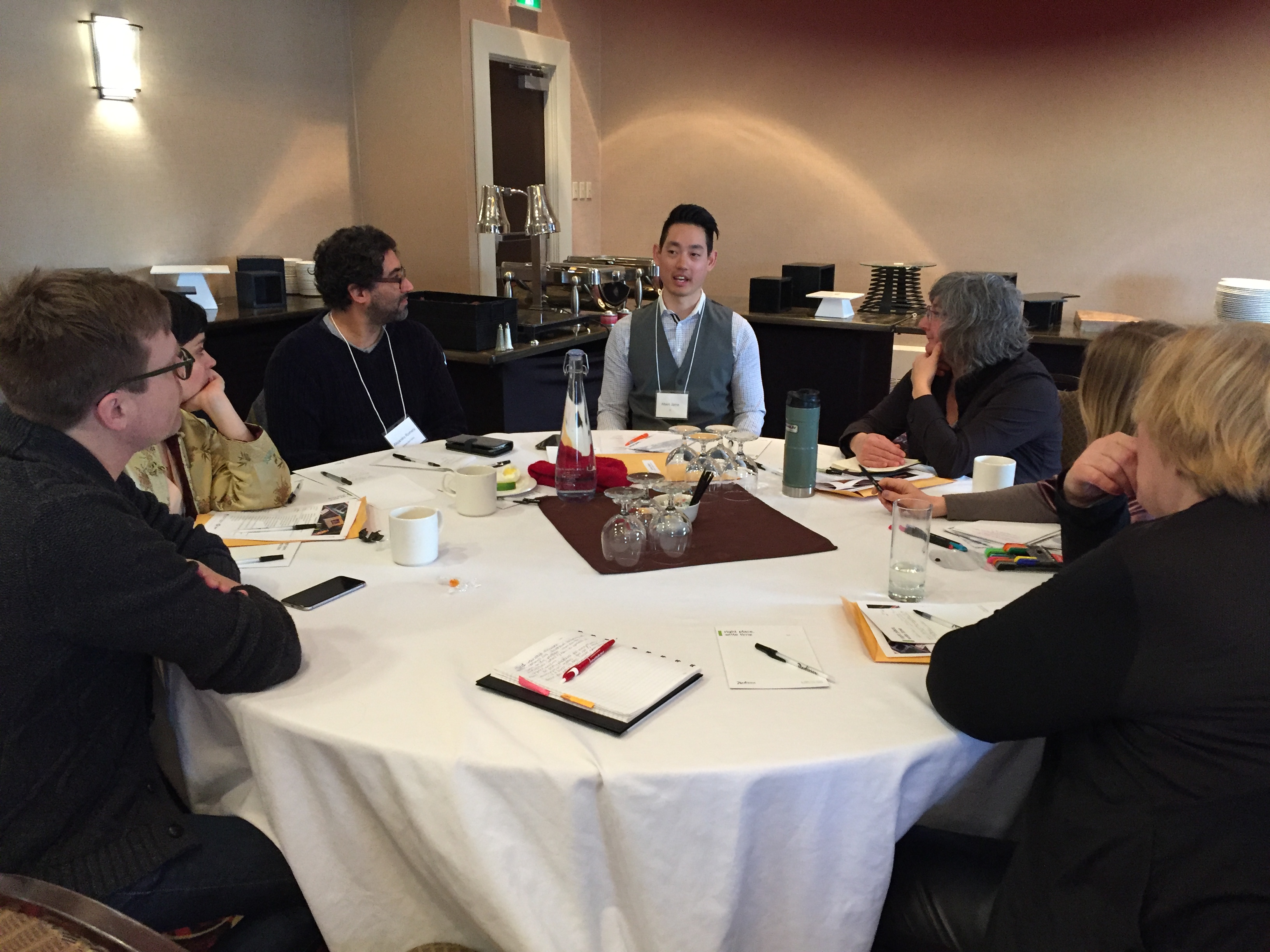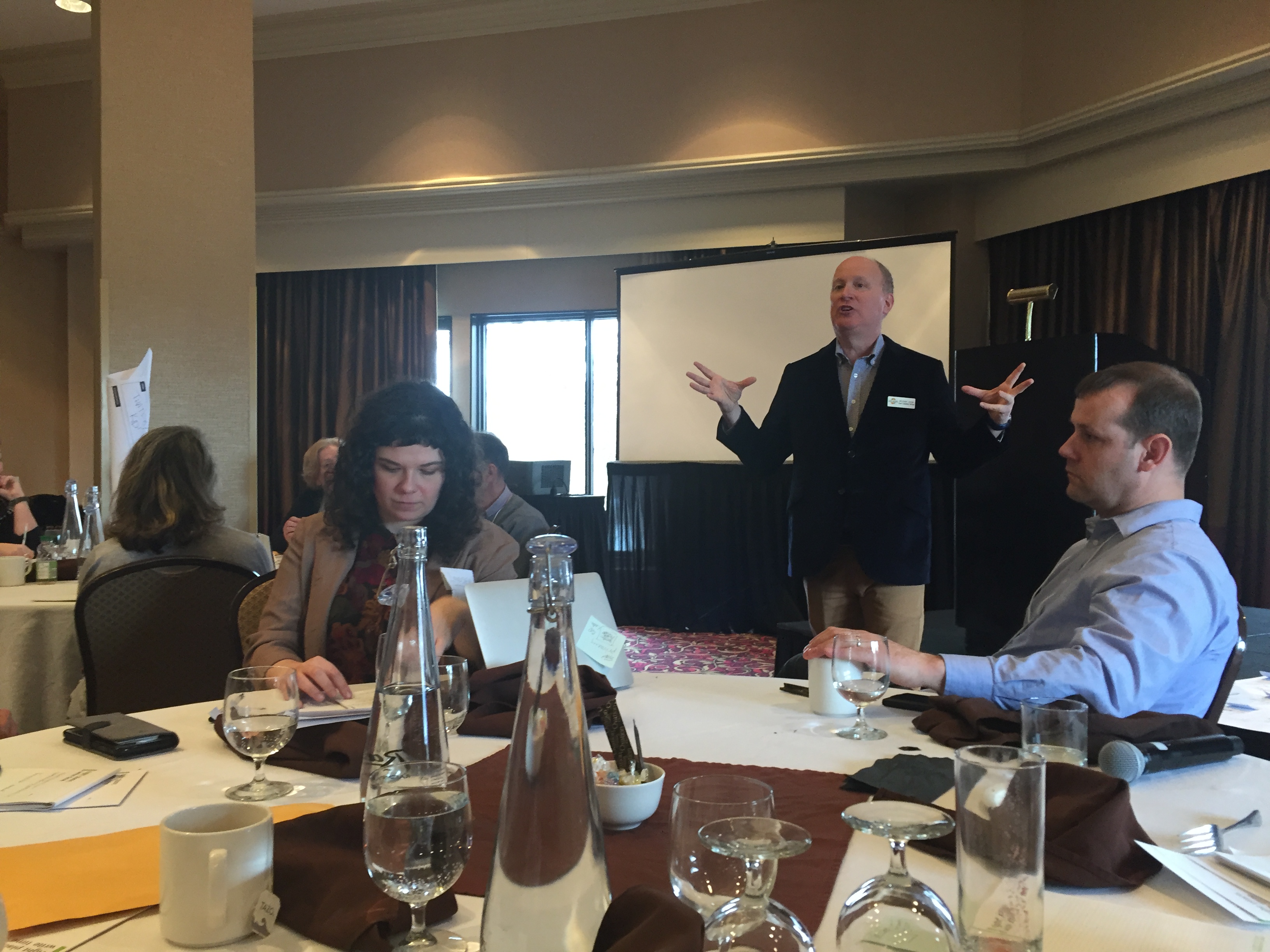
Forty artists and representatives from arts organizations from around the province came together in late March to learn about how digital strategies and tools can help them connect with audiences in new ways.The event kicked off with a keynote address by Ana Serrano from the Canadian Film Centre. She spoke about using digital tools in ethical ways. “This is a complicated, complex time that we’re living in. Artists and arts organizations are one of the most significant groups to help unpack that complexity and move into the future,” she said.
Laurie Biderman and Rémi Lortie of the Canada Council for the Arts spoke about the council’s new Digital Strategy Fund, which is meant to stimulate the digital transformation of the arts sector in Canada. The fund offers grants of $1,000 to $500,000 to artists and arts organizations to help them explore themes and answer questions related to digital strategies. There has been one intake so far. Those grant results will be announced soon, so you can get an idea of the kinds of projects that are being funded. For more on the Canada Council’s Digital Strategy Fund, visit their website.
On the second day, a plenary panel, or IDEA Lab, featured Torien Cafferata of It’s Not a Box Theatre, Skawennati Fragnito of Aboriginal Territories in Cyberspace, Julie Gendron of Desiring Productions, Albert Jame of zu, and Paul Magnuson of the PRGM, Beakerhead and PK Sound.
Albert mentioned that we need to be aware of what’s happening culturally with technology and understand the high expectations people have for service and accessibility. Paul talked about interactive public art activations as a way to reach a new generation of audiences who have been raised on video games and smartphones. “They won’t be able to interact with the art if you don’t apply the constructs that they’re used to,” he said. Skawennati emphasized that technology doesn’t need to be a scary thing. “Everyone older than me thinks they can break the internet. If you want to use technology, you can figure it out. There is a small learning curve,” she said, going on to note that it’s important for Indigenous people to not only be users of technology but producers of it. Torien spoke about using augmented reality to transform storytelling, and how he combined his love of gaming with theatre through the Overhear pod-play. Julie talked about creating a streaming website that connected art film distributors and festival programmers.
Following the panel, participants were able to join in small roundtable discussions with each of the presenters, to ask questions and discuss ideas. Afterward, three concurrent workshops were held: “What’s It All About? What are the New Tools and How Can We Use Them?” with Albert; “Indigenous Approaches to Digital Strategies and Tools” with Skawennati; and “How Do I Begin? How Can I Start Implementing a New Digital Strategy?” with Julie.
Digital Strategy Days concluded with an opportunity for artists and organizations to share a “wish list” of what they need to be successful. As the lists were read out, other participants offered to help with strategies, tasks and facilitating connections.
Alejandro Romero attended as an independent artist as well as a public art consultant with the City of Saskatoon. He said, “These resources and connections are very important. I feel gratitude at the extraordinary amount of sharing and new opportunities this kind of event presents. I appreciate the generosity of the presenters. They gave presentations but left us with so much more than that – resources and collaborative opportunities.”
The Saskatchewan Arts Board partnered with the Canada Council for the Arts topresent Digital Strategy Days on March 26-27, 2018, in Saskatoon
Photos:
Top: Albert Jame leads a roundtable discussion.
Bottom: Michael Jones, CEO of the Saskatchewan Arts Board, wraps up the second day.
